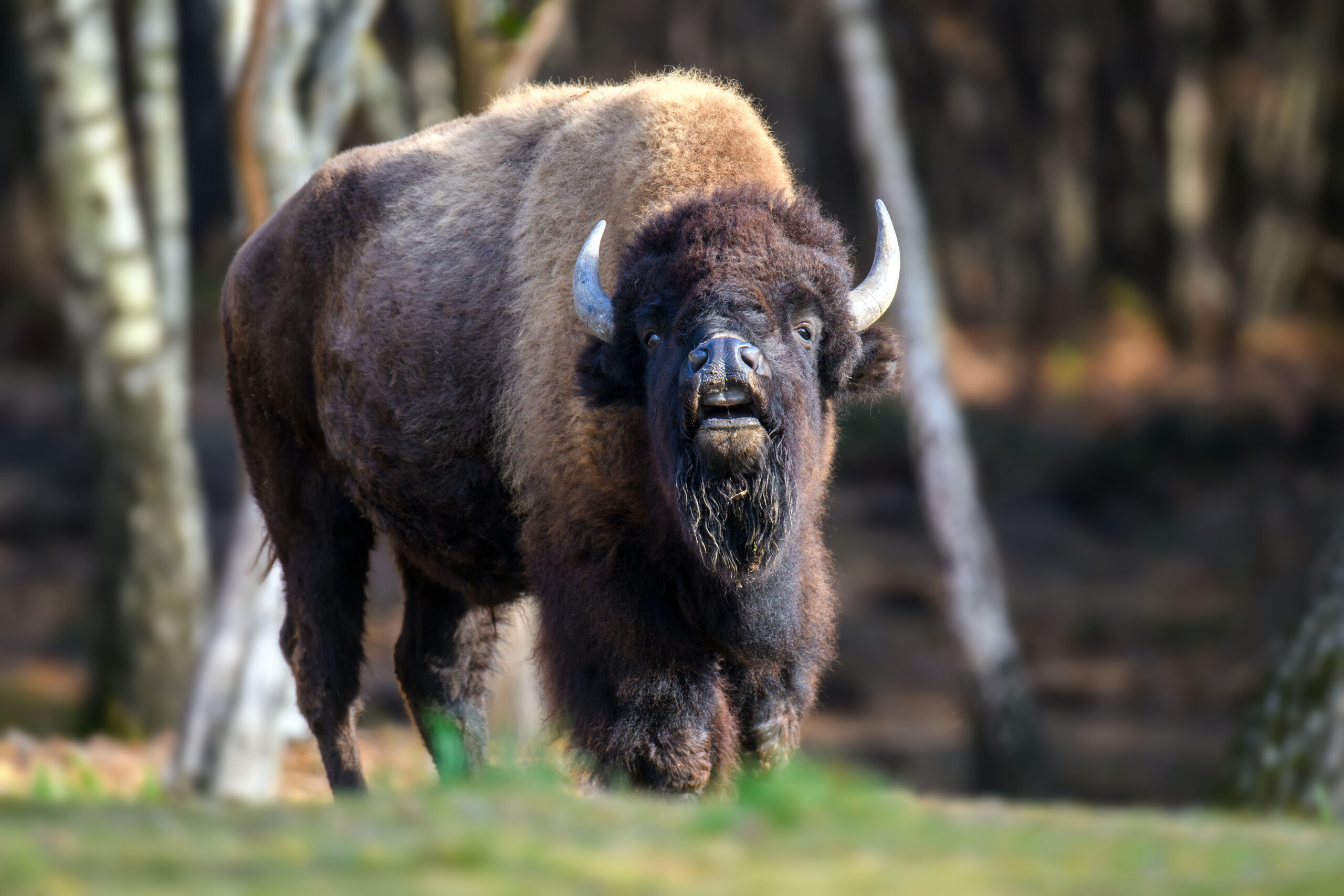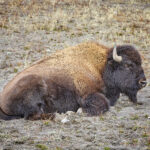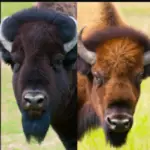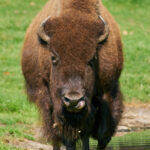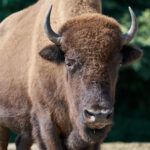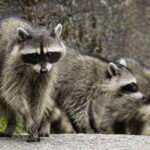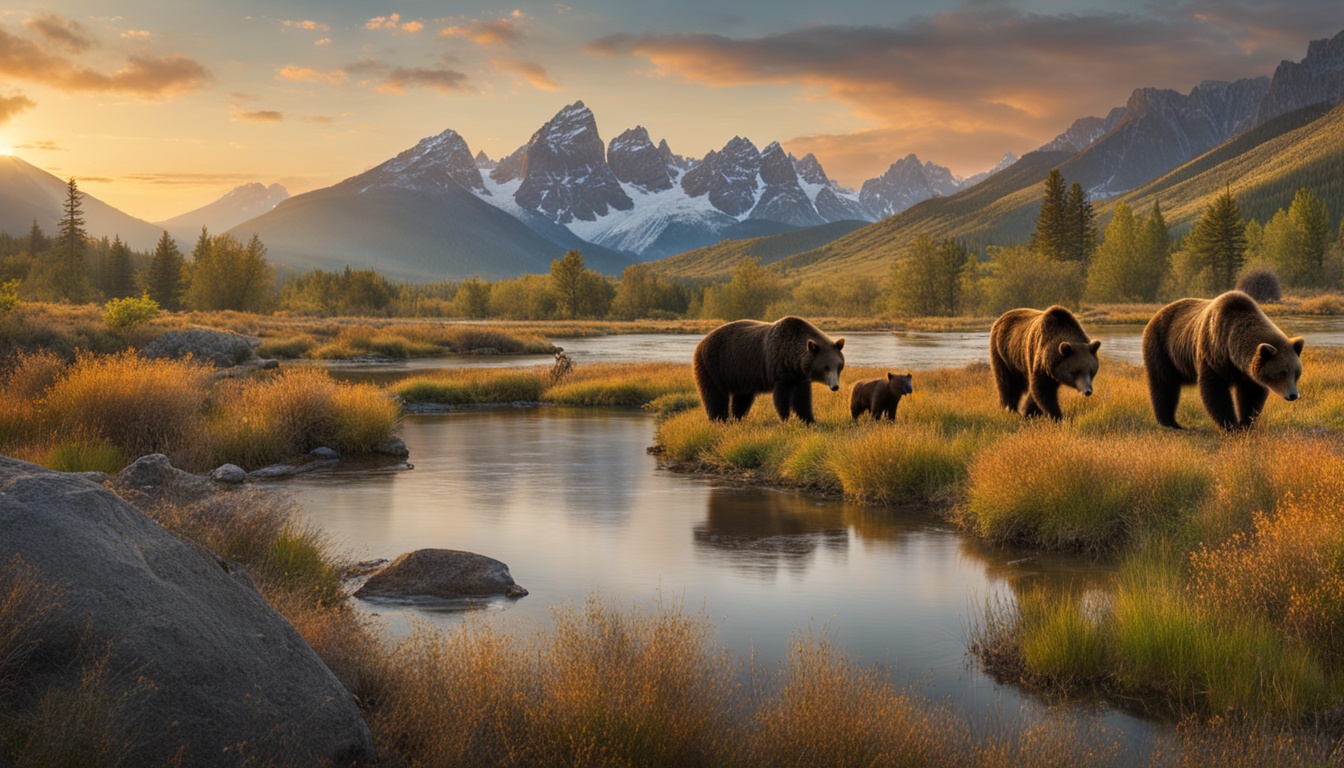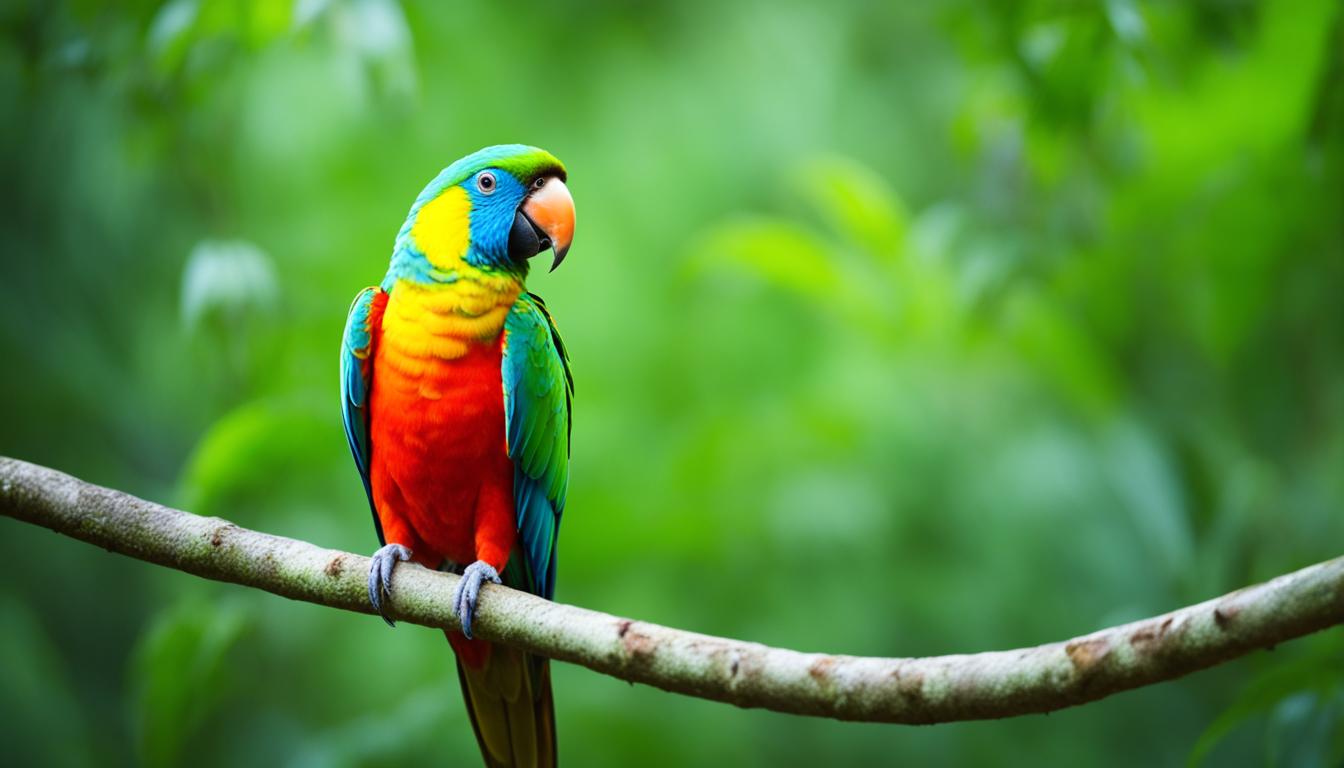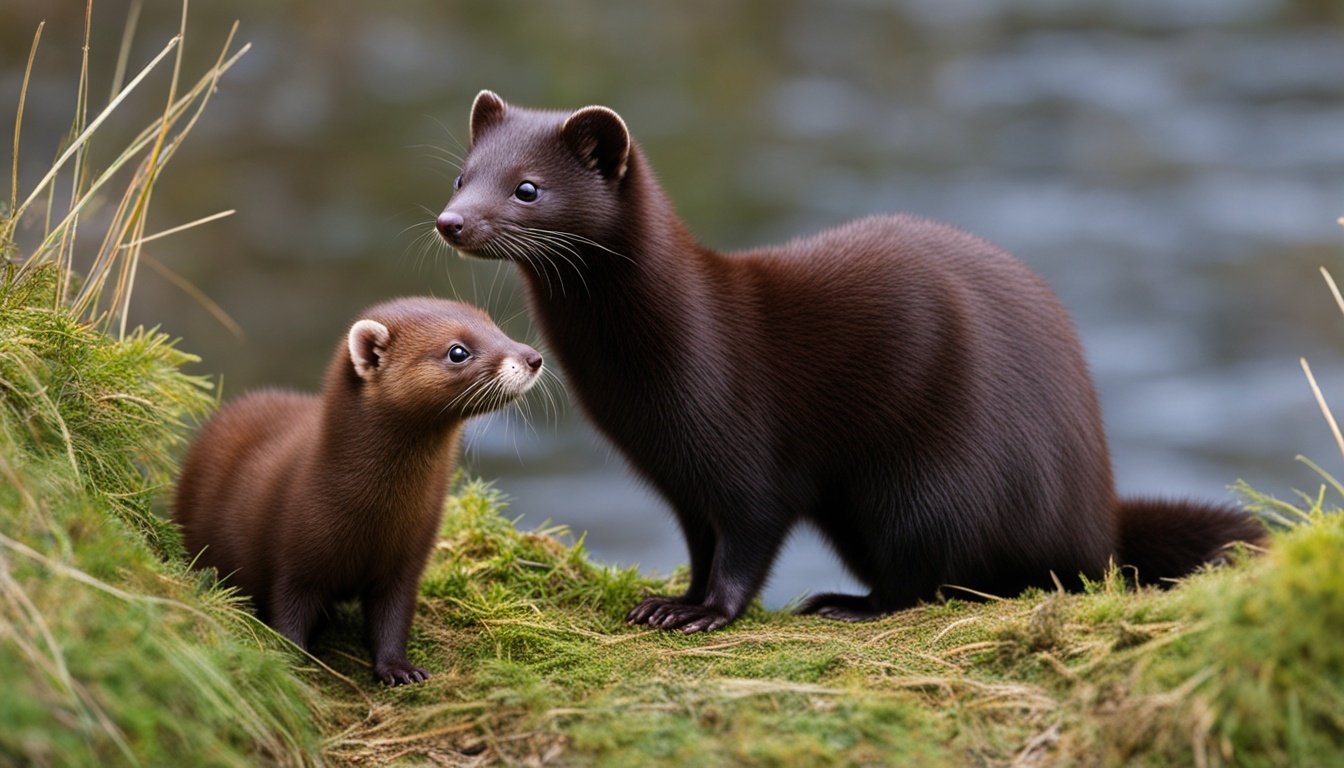From the prairies of North America to the grasslands of Eurasia, you’ll discover the diverse habitats that these majestic creatures call home. Whether you’re a nature enthusiast or simply curious about bison,
Overview of Bison
Bison, also known as American buffalo, are large mammals that belong to the Bovidae family. They are native to North America and have played a significant role in the continent’s history and ecosystem.
Bison are known for their strong and sturdy build and iconic hump on their shoulders. They have become a symbol of the wild and untamed West, but their influence goes beyond just being a cultural emblem.
In this comprehensive article, we will delve into the various aspects of bison, including their physical characteristics, behavior and habits, diet, predators and threats, their role in the ecosystem, their adaptation to the grassland biome, and the current conservation efforts being made to protect these magnificent creatures.
Physical Characteristics of Bison
Size and Weight
Bison are among the largest land mammals in North America. Adult males, known as bulls, can reach a shoulder height of up to six feet (1.8 meters) and weigh between 1,700 and 2,800 pounds (770 to 1,270 kilograms).
Females, called cows, are slightly smaller, measuring around five feet (1.5 meters) in shoulder height and weighing between 900 and 2,000 pounds (410 to 910 kilograms). Their massive size and weight make them an imposing presence in their habitat.
Color and Coat
Bison have a distinct physical appearance characterized by their shaggy hair and dark brown fur. Their coat is composed of two layers: a coarse outer layer, which protects them from harsh weather conditions, and a dense undercoat that provides insulation during colder seasons.
In the summer, their fur tends to lighten, appearing to have a reddish-brown hue. This color camouflage helps them blend into the grasslands where they reside.
Horns and Hump
One of the striking features of bison is their massive horns. Both males and females have horns, which are used for defense and dominance battles.
The horns of males can grow up to two feet (60 centimeters) long, while those of females are shorter but still formidable. Another distinct characteristic of bison is the hump on their shoulders.
This hump is composed of muscles and supported by several vertebrae, allowing bison to use their heads to push through the snow in search of food during winter.
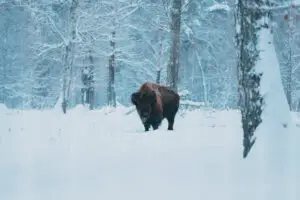
Lifespan of Bison
Bison have a relatively long lifespan compared to other large mammals. In the wild, they can live up to 20 years, while bison in captivity have been known to live well into their 30s. Factors such as the availability of food, the prevalence of predators, and the overall health of the population can influence the lifespan of individual bison.
Behavior and Habits of Bison
Daily Routine and Activities
Bison are highly adaptable creatures and can thrive in a variety of habitats, including grasslands, prairies, and even forests. They are primarily herbivores and spend a significant portion of their day grazing on grasses, sedges, and other vegetation.
Bison are diurnal animals, meaning they are most active during the day and tend to rest and ruminate during the night. They move in groups called herds, which can range from a few individuals to hundreds or even thousands during migration.
Social Structure
Bison are social animals and have a hierarchical social structure within their herds. The herd is typically led by a dominant male, known as the alpha bull, who ensures the safety and well-being of the group.
Female bison and their offspring form the core of the herd, while young males eventually leave the herd to seek companionship with other bulls or form small bachelor groups. This structure allows for better coordination and protection against predators.
Reproduction and Breeding Cycle
The breeding season, or rut, for bison, occurs during the late summer and early fall. Bulls engage in fierce duels for the attention of receptive females. The alpha bull, with his size and strength, usually emerges as the victor and mates with multiple cows.
After a gestation period of approximately nine months, female bison give birth to a single calf, which can stand and walk shortly after birth. Calves stay close to their mothers and are nursed for several months until they are weaned.
Means of Communication Among Bison
Bison have a range of visual, auditory, and olfactory signals to communicate with one another. They use their body postures, such as head nods and tail flicks, to convey information about their intentions or hierarchy within the herd.
Vocalizations, such as grunts and bellows, are also employed to communicate various messages, including warning calls or for calving females to locate their young. Additionally, bison use their sense of smell to identify individuals, mark territories, and establish social bonds.
Diet and Feeding Habits
Types of Food Bison Eat
Bison are herbivores and primarily feed on grasses. They have a highly specialized digestive system that allows them to extract nutrients from plant fibers efficiently. Bison also consume a variety of other vegetation, including sedges, shrubs, and even tree bark during harsh winter months when food is scarce.
How They Find and Consume Food
Bison are well-adapted to locate food sources across vast landscapes. Their strong sense of smell enables them to detect fresh grasses and other edible plants. Bison feed by grazing, which involves walking continuously while plucking tufts of grass with their muscular tongues. This feeding strategy allows them to cover large areas efficiently and prevents overgrazing in a single location.
Feeding Habits According to Season
The feeding habits of bison vary according to the seasons. During the warmer months when grasses are abundant, bison tend to graze on fresh vegetation, moving in a constant search for the most nutritious plants. As winter approaches and food becomes scarce, bison adapt by digging through the snow to reach grasses or feeding on low-hanging branches and shrubs. This flexibility in their feeding habits ensures their survival in changing environmental conditions.
Predators and Threats to Bison
Common Predators of Bison
In the past, bison faced natural predators such as wolves, bears, and cougars, which hunted the weak, sick, or young individuals. However, due to the decrease in predator populations and the expansion of human activities, these threats have been significantly reduced in many regions.
Human Threats
Human activity has become one of the most significant threats to bison populations. Historical overhunting and habitat destruction nearly led to the extinction of bison in the 19th century, with estimates suggesting the population fell from tens of millions to just a few hundred individuals. Although conservation efforts have helped to increase their numbers, bison still face ongoing threats from illegal hunting, habitat fragmentation, domestic livestock competition, and disease transmission from livestock.
Health Threats and Diseases
Bison, like other mammals, are susceptible to various health threats and diseases. Brucellosis, a bacterial infection, is one of the primary concerns for bison populations. It can cause infertility and spontaneous abortion in females, posing a significant risk to reproductive success. Other diseases, such as bovine tuberculosis and anthrax, can also affect bison. Ensuring the health and well-being of bison requires ongoing monitoring, preventative measures, and management strategies to mitigate disease outbreaks.
Bison’s Role in the Ecosystem
Nutrient Cycle
Bison play a crucial role in the nutrient cycle of the ecosystem they inhabit. As grazers, they consume large amounts of plant matter, processing it in their digestive systems.
When bison excrete waste, they spread nutrient-rich droppings across the landscape, acting as natural fertilizers. This helps to promote the growth of grasses and other plants, creating a healthier and more diverse ecosystem overall.
Bison as a Keystone Species
Bison are considered keystone species, meaning their presence has a disproportionately large impact on their habitat compared to their population size.
Their grazing behavior helps maintain the balance between plant species, preventing the domination of a single plant type and promoting biodiversity.
By altering vegetation density and structure, bison create habitat niches for other animals, including birds, insects, and small mammals, which rely on specific plant structures for nesting, food, and shelter.
Impact on Vegetation and Other Species
Bison have shaped the grassland ecosystems of North America for thousands of years. Their grazing patterns influence the distribution and composition of vegetation, creating a mosaic of different grass heights and densities.
This patchy habitat supports a wide range of plant species, which in turn attracts a diverse array of herbivores, pollinators, and predators. By maintaining the health and productivity of grasslands, bison indirectly contribute to the overall well-being of the ecosystem and its inhabitants.
Understanding Biomes
Definition of a Biome
A biome is a large-scale biological community characterized by distinct environmental features, including climate, geography, and dominant plant and animal species. It represents a specific type of habitat that is found in various parts of the world, each with its unique set of conditions and ecological dynamics.
Types of Biomes
There are several major biomes on Earth, each with its specific characteristics and inhabitants. Some of the most well-known biomes include the tropical rainforest, arctic tundra, temperate deciduous forest, desert, and grassland.
Each biome has its distinct climate, precipitation patterns, soil composition, and plant and animal adaptations that allow them to thrive in their respective environments.
Characteristics of Different Biomes
The characteristics of a biome are closely tied to its climate and geography. For example, tropical rainforests are characterized by high temperatures, abundant rainfall, dense vegetation, and high levels of biodiversity. On the other hand, arctic tundras have cold temperatures, low precipitation, and a short growing season, resulting in sparse vegetation and adapted species. Understanding the unique characteristics of each biome helps researchers and conservationists appreciate the specific challenges and opportunities that exist within these ecosystems.
The Biome of Bison
Description of the Grassland Biome
The grassland biome is characterized by vast stretches of open plains covered in grasses, sedges, and forbs. Unlike forests or deserts, grasslands have relatively few trees and occur in areas with moderate rainfall and seasonal variations in temperature. Grasslands are found on every continent except Antarctica, and each region has its specific subtypes of grassland, including temperate grasslands, tropical savannas, and polar grasslands.
Climate and Geography of the Grassland Biome
Grasslands typically experience moderate rainfall patterns, with an annual average between 10 and 30 inches (25 to 75 centimeters). The precipitation is often seasonal, with more rain falling in the spring and summer months.
The grassland biome is located in areas with a continental climate, which means they have distinct seasons, including hot summers and cold winters. The combination of these climate and geographic factors creates the ideal conditions for the growth of grasses, which form the backbone of the grassland ecosystem.
Bison’s Adaptation to Their Biome
Physical Adaptations
Bison have developed various physical adaptations that allow them to thrive in the grassland biome. Their large size and weight provide them with an advantage in dominating their environment.
They have strong legs and sharp hooves that can traverse the uneven terrain of the grasslands efficiently. Their tough, shaggy coat protects them from extreme weather conditions, including hot summers and cold winters. bison’s hump, composed of muscles, allows them to navigate through snow and reach buried vegetation during winter.
Behavioral Adaptations
Bison have behavioral adaptations that help them survive in the grassland biome. They have evolved a grazing strategy that involves constant movement in search of the most nutritious grasses.
This behavior prevents overgrazing in a particular area and allows the vegetation to regenerate. Bison also migrate seasonally, following the availability of food and water.
This movement helps to prevent resource depletion in a single location and allows for better distribution of grazing pressure across the grassland.
Dietary Adaptations
As herbivores, bison have developed specialized digestive systems to extract nutrients from tough grasses. They have large, multi-chambered stomachs that enable them to break down and ferment plant matter effectively.
Bison can consume large quantities of vegetation in a single day, extracting the maximum energy from each mouthful. This ability to efficiently process and extract nutrients from a primarily high-fiber diet has allowed them to thrive in the grassland biome, where food is often abundant but requires specialized adaptations to extract its energy.
Do Bison Have Multiple Stomachs to Aid in Digestion in Their Biome?
The bison stomach anatomy details reveal fascinating insights into their digestive process. Bison, like other ruminants, possess a complex four-chambered stomach. This unique adaptation enables them to efficiently break down tough plant material, a crucial aspect for their survival in their specific biome.
Conservation Status and Efforts for Bison
Current Conservation Status of Bison
Bison have made a remarkable recovery since their near-extinction in the 19th century. They are currently listed as a species of “least concern” by the International Union for Conservation of Nature (IUCN).
However, despite their improved numbers, bison populations still face various threats, and their conservation status varies across different regions. Some subpopulations are more vulnerable and may be listed as endangered or threatened at the local or regional level.
Causes for Their Decline
The decline of bison populations in the past was primarily due to overhunting and habitat destruction. In the 19th century, commercial hunting for their valuable fur and the expansion of agriculture and settlements led to a severe reduction in their numbers.
The loss of natural habitats and competition with domestic livestock further exacerbated their decline. Today, the main causes for concern include habitat loss due to urbanization, fragmentation of their range, and disease transmission from domestic livestock.
Conservation Efforts and Their Effectiveness
Various conservation efforts have been implemented to protect and restore bison populations. Through the establishment of national parks and protected areas, bison have been given designated spaces to live and breed without fear of hunting or habitat loss.
Government regulations and legal protections have also been put in place to ensure the sustainable management of bison populations. Additionally, many private and public organizations work together to monitor bison populations, conduct research, and raise awareness about their importance.
These efforts have resulted in successful reintroductions of bison to their historic ranges and the gradual recovery of their populations.
In conclusion, bison are magnificent creatures that have had a significant impact on the North American ecosystem for thousands of years.
Their physical characteristics, behavior, and role in the grassland biome exemplify their resilience and adaptability. Recognizing the importance of bison in maintaining the health and balance of the ecosystem is crucial for their conservation.
By understanding their unique adaptations and implementing effective conservation strategies, we can ensure the continued presence of bison in the wild for future generations to appreciate and enjoy.

